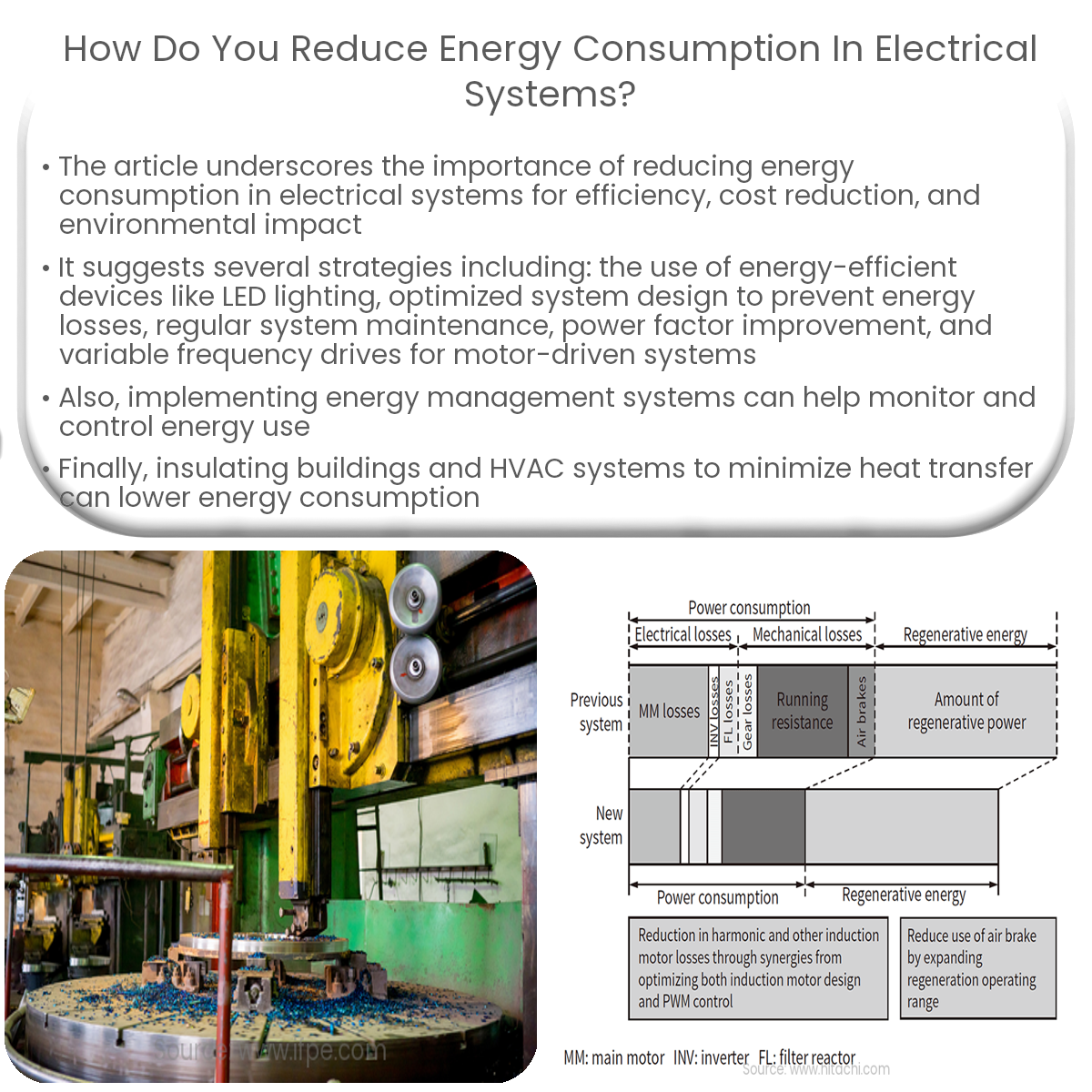To reduce energy consumption, use energy-efficient devices, optimize system design, maintain equipment, improve power factor, and employ EMS.
Reducing Energy Consumption in Electrical Systems
Reducing energy consumption in electrical systems is crucial for improving efficiency, lowering operating costs, and reducing the environmental impact. This article presents several strategies to minimize energy consumption in electrical systems.
1. Implement Energy-Efficient Devices
Replacing outdated or inefficient devices with energy-efficient alternatives, such as LED lighting and energy-efficient motors, can significantly reduce energy consumption. Energy-efficient devices typically consume less energy while maintaining or improving performance.
2. Optimize System Design
Efficient system design plays a vital role in reducing energy consumption. Proper sizing of electrical components, such as transformers, motors, and cables, ensures optimal performance and prevents energy losses due to overloading or underloading.
3. Regular Maintenance
Regular maintenance of electrical systems can help maintain efficiency and prevent energy losses due to wear and tear. This includes cleaning or replacing air filters, tightening connections, and inspecting equipment for damage or wear.
4. Improve Power Factor
Improving the power factor of an electrical system can reduce energy consumption by minimizing reactive power. Installing power factor correction capacitors or using synchronous motors can help achieve a power factor closer to unity.
5. Use Variable Frequency Drives (VFDs)
For motor-driven systems, using variable frequency drives (VFDs) can optimize energy consumption by adjusting motor speeds according to the load requirements. This helps to reduce energy consumption when operating at partial loads.
6. Implement Energy Management Systems
Energy management systems (EMS) can help monitor and control energy usage in real-time, enabling users to identify inefficiencies and optimize energy consumption. EMS can also automate energy-saving strategies, such as scheduling equipment operation during off-peak hours.
7. Insulate Buildings and HVAC Systems
Proper insulation of buildings and HVAC systems can minimize heat transfer and reduce energy consumption for heating and cooling. Insulation materials, such as fiberglass or cellulose, can be added to walls, ceilings, and floors to minimize energy losses.
Conclusion
Reducing energy consumption in electrical systems is a multi-faceted effort that involves optimizing devices, system design, maintenance, and operational strategies. By implementing energy-efficient devices, improving power factor, using VFDs, and employing energy management systems, users can significantly reduce energy consumption, lower operating costs, and minimize environmental impact.


